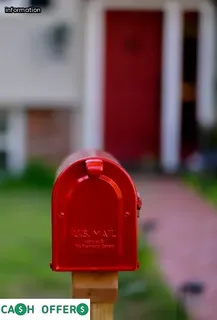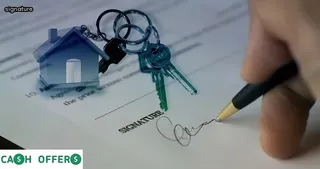Using a South Dakota Quitclaim Deed without Covenants to transfer property rights has several distinct benefits. Firstly, it is a much simpler process than legally transferring property using a warranty deed with covenants.
A Quitclaim Deed does not involve any guarantee or warranties of title and only transfers the rights of the grantor to the grantee. This means that it is much quicker and easier to execute compared to a warranty deed.
Furthermore, because there is no guarantee of title being transferred, there are no additional costs associated with title searches or insurance requirements. Additionally, due to its simplicity, South Dakota Quitclaim Deeds without Covenants are also less expensive than warranty deeds and require fewer services from legal professionals such as attorneys or other representatives.
Finally, this type of deed can be used for both residential and commercial properties in South Dakota making it an ideal choice for anyone looking to transfer rights quickly and cost-effectively.

When it comes to preparing a South Dakota quitclaim deed for your house, it is important to understand the legal implications of this type of deed. A quitclaim deed is a document that transfers ownership of real estate from one party to another without making any guarantees about the condition of the title or property.
It is different from a warranty deed which provides an assurance that the seller holds clear title on the property and will defend against any claims by others. In South Dakota, quitclaim deeds are legally binding documents and must be executed according to state law in order for them to be valid.
This includes having two witnesses sign the document along with both parties involved in the transfer. It is also important to note that when filing a quitclaim deed in South Dakota, you must include additional information such as the grantor’s and grantee’s name and address, description of the property being transferred, and consideration for the transfer.
Additionally, all quitclaim deeds must be notarized in order for them to be accepted at county registrar offices. Understanding how these legal documents work can help ensure a smooth transition when transferring ownership of your home in South Dakota using a quitclaim deed.
A South Dakota quitclaim deed without covenants is an excellent way to quickly and easily transfer ownership of real estate without the need for a lengthy legal process. This type of deed is used when the buyer has full trust in the seller that there are no issues with the title or ownership of the property.
It is ideal for situations such as transferring property from one family member to another, or when a married couple decides to change the name on their deed from joint tenancy to individual tenancy. A South Dakota quitclaim deed without covenants should always be prepared by a licensed attorney who can provide guidance and advice throughout the process.
Before signing any documents, it is important to get a clear understanding of all parties’ rights and responsibilities related to the transaction. Additionally, both parties should receive a copy of the completed document for their records and make sure that all signatures are witnessed by two individuals.
Taking these steps will ensure that everyone involved in a South Dakota quitclaim deed without covenants knows exactly what they are signing and understands how it affects them legally.

A South Dakota Quitclaim Deed without Covenants Form is a document used to transfer ownership of real estate from one person to another. It is important that the form is properly filled out in order to ensure a smooth and successful transfer of ownership.
The key components of this form include the grantor, grantee, legal description of the property, consideration amount, and acknowledgments. The grantor is the current owner of the property who is conveying it to another person while the grantee is the person receiving ownership.
The legal description includes the county, municipality, and parcel number where the property is located. Consideration amount refers to money paid as part of transferring ownership; if no money was exchanged then it should state “none” or “no consideration” on the form.
Finally, both parties must sign and acknowledge that they understand all terms of the deed before it can be properly executed.
A South Dakota Quitclaim Deed Without Covenants is a powerful tool for real estate transactions in the state because it allows parties to transfer title to property without warranties or guarantees. In many cases, this type of deed can be used to quickly and easily transfer ownership of a home from one party to another without the need for lengthy legal processes.
Additionally, this type of deed offers an added layer of protection that can help shield both the buyer and seller from potential liabilities associated with real estate transactions. Furthermore, South Dakota Quitclaim Deeds are relatively simple documents that require little paperwork or effort on behalf of either party involved in the transaction.
Lastly, using a South Dakota Quitclaim Deed Without Covenants can help streamline the closing process and reduce any potential delays that may arise as a result of more complex real estate transactions.

A South Dakota quit claim deed without covenants is an important part of the process when transferring real estate ownership. It is a legal document that conveys title to real property from one person or entity to another, and it does not guarantee that the buyer will get clear title.
Understanding how this type of quitclaim deed relates to title insurance can help protect both parties involved in the transfer of ownership. Title insurance is a policy issued by an insurer that guarantees the accuracy of the public records used for transferring title; it also protects against claims against your property from third parties.
By taking out a title insurance policy, buyers are safeguarding themselves from any possible defects in the title that could arise from errors in the public records or from third party claims. Although South Dakota quit claim deeds do not provide assurance of clear title, they are still necessary for completing a sale; if there are covenants included on the deed, they must be met in order for the transfer to be successful.
When preparing a South Dakota quitclaim deed without covenants, it is important to understand how these types of deeds relate to title insurance so you can make sure you are getting the protection you need during your home purchase.
Making changes or revoking a South Dakota Quitclaim Deed without Covenants is possible, but it must be done correctly in order to ensure that the deed is legally valid. The process of amending or revoking a Quitclaim Deed without Covenants in South Dakota involves drafting a new deed, executing it and filing it with the Register of Deeds in the county where the property is located.
Before you begin, make sure you have all of the necessary information, such as your legal name and address, the grantee’s name and address and a description of the property. Once you have gathered all of this information, it is important to draft a deed that clearly states what changes are being made.
It should include language that states that any prior deeds referencing the subject property are hereby revoked, as well as language that describes what rights are being granted to the grantee. Once everything is written out correctly, both parties must sign and date the document before having it notarized by an authorized notary public who will then witness their signatures.
Finally, you should file two copies of the Quitclaim Deed with your local Register of Deeds office for safekeeping.

Creating a South Dakota Quitclaim Deed without Covenants is a straightforward process, but there are certain requirements that must be met to ensure it is valid and legal. The form must be signed by the grantor in the presence of two witnesses, who must also sign the deed.
The grantor's residence must be stated in the document along with the address of the property being transferred. It is also important to include details such as the full legal description of the property, names of all parties involved in the transaction, and a notarized acknowledgment from each party.
Furthermore, it is essential that all documents are delivered to the Register of Deeds office for recording. The filing fee for recording varies from county to county, so it is best to check with your local office before submitting your paperwork.
Finally, you will need to provide proof of ownership such as a deed or other document showing title in order for your quitclaim deed to be accepted. By following these simple steps, you can prepare and file a valid South Dakota Quitclaim Deed without Covenants and transfer ownership of your house quickly and easily.
When preparing a South Dakota Quit Claim Deed for your house, it is important to be aware that many common mistakes can occur if not done correctly. One pitfall to avoid is failing to correctly identify the grantor and grantee.
All parties must be clearly identified with their full legal name in the deed, or else it may be rejected by the county office. Also, any prior instruments affecting title to the property should be listed on the deed and all covenants omitted from the document.
Lastly, it is essential that all signatures affixed to the document are original and notarized in order for it to be properly accepted by the county office. Therefore, accuracy when completing and filing a South Dakota Quitclaim Deed Without Covenants Form is key in order for your deed to be accurately recorded.

Comparing the legal documents used for estate planning for property located in South Dakota, a Quit Claim Deed is one of the more common documents utilized. This type of deed transfers the title of a property to another without making any warranties as to its condition.
In order to prepare a Quit Claim Deed in South Dakota, certain information must be included such as the Grantor's name, address and signature; the Grantee's name and address; a description of the property; acknowledgement that there are no outstanding liens or mortgages; and a notarized acknowledgement that all parties have agreed to transfer ownership. Additionally, all Quit Claim Deeds must be filed with the county register of deeds office in which the property is located.
Although it may seem overwhelming at first, preparing a Quit Claim Deed for your house in South Dakota does not have to be difficult if you understand what is required and follow the steps outlined above.
Failing to adhere to South Dakota's laws regarding quit claim deeds with covenants can have serious consequences. The most severe of these is potentially being held liable for any debt or other claims on the property, even after the transfer of ownership.
It is important to be aware that if a deed does not include a covenant, the buyer may be unaware of any liens that exist against the property, which could result in significant financial losses. Furthermore, if an owner has already transferred the deed without a covenant, they may be held responsible for damages caused by future owners who are not aware of any existing liens.
To avoid such risks, it is best practice to ensure that all quit claim deeds in South Dakota include a proper covenant before transferring ownership. Moreover, sellers should keep copies of all documents related to the sale and retain them for future reference as needed.

Before signing or creating a South Dakota Quitclaim Deed without Covenants, it is important to ask some key questions. These questions should include who will be involved in the deed, what kind of property is being transferred, and how much money will be exchanged during the transaction.
It's essential to ensure that all parties are aware of their obligations under the deed and understand the legal effects of such an agreement. Additionally, you should double-check that all documents are properly completed and filed with the appropriate local government offices before any transfer can take place.
It's also important to consider any potential tax implications associated with the transfer. By asking these questions before preparing or signing a South Dakota Quitclaim Deed without Covenants, you can be sure that everything goes as smoothly as possible when transferring real estate in this state.
Preparing a South Dakota Quit Claim Deed for your house can be a complicated process, but with some simple guidelines you can make it much simpler. First and foremost, the deed needs to be signed by both parties involved in the transfer of ownership.
The deed also must include a description of the property being transferred, as well as a legal description. Once this information is included, the deed should be notarized and then filed with the Register of Deeds in the county where the property is located.
Additionally, if this type of deed is used, there should be no covenants or restrictions included in it. When all these steps have been completed, the deed will be legally binding and allow for a successful transfer of ownership without any complications.

In South Dakota, it is possible to create a quitclaim deed without covenant for transferring title to residential property. If you are looking for sample forms or templates to use as a basis for preparing your own quitclaim deed without covenant, there are several online resources available.
These resources can provide you with the necessary information and documents needed to construct your own legal document. Additionally, many county offices in South Dakota have the templates readily available for individuals interested in creating their own quit claim deed without covenants.
You may also be able to find relevant sample forms at an office supply store or local library. Ultimately, if you need help constructing your South Dakota quit claim deed without covenant, it is recommended that you contact a real estate lawyer who specializes in this area of law as they will be able to provide guidance on filling out the form and answer any questions you may have about the process.
Completing a South Dakota Quit Claim Deed without Covenant can be an intimidating process. Luckily, there are many resources available to help make the job easier.
For starters, the South Dakota Quit Claim Deed form is available online and can be filled out electronically or printed and completed by hand. Additionally, local county clerks may also have helpful information regarding the specific requirements in your county.
Some counties even offer assistance, either through a staff member or pre-printed forms with instructions. Furthermore, many web-based resources exist to help guide you through the process of creating a deed.
These sites often provide step-by-step instructions that explain how to fill out the necessary documents, provide general information about quit claim deeds, and offer advice on how to avoid common mistakes when preparing them. Finally, qualified legal professionals are always an option for those who need more personalized guidance for completing a Quit Claim Deed in South Dakota without Covenant.

When creating a South Dakota Quit Claim Deed for your house, there are several factors that can affect the validity of the document. It is important to consider if there are any covenants that would limit or restrict the transfer of title in the deed.
If so, these should be addressed prior to filing the deed. Additionally, it is crucial to ensure that all parties involved have provided their consent and signature on the deed.
The property must also be clearly identified in order to properly identify who will assume ownership of the property after the deed has been processed. Furthermore, all parties must provide valid identification and proof of address when signing the document as this helps verify their identity and protect all parties involved in this transfer of title.
Finally, it is essential to understand any applicable state laws or regulations that could impact how a South Dakota Quit Claim Deed is processed in order to ensure its validity.
Transferring property via a South Dakota Quit Claim Deed without covenant comes with certain tax implications that must be taken into consideration. The party releasing their claim on the property is responsible for any outstanding taxes, and should make sure to pay off all liens and other costs associated with the transaction before signing the deed.
The transferor must also ensure they have paid all necessary taxes on capital gains or other income related to the property prior to finalizing the transfer. When preparing a Quit Claim Deed without covenant, it is important to be aware of any potential transfer taxes due upon completion of the document, as well as of any future tax liabilities that may arise if capital gains are realized at a later date.
It is also important to determine if the new owner will be subject to real estate taxes in South Dakota and how they will pay them. Finally, each party should consult their own attorneys or tax advisors to ensure compliance with applicable laws and regulations when transferring property through a South Dakota Quit Claim Deed without covenant.

It is important to seek professional help when preparing and filing a South Dakota Quit Claim Deed without covenant. This type of deed should be handled with care and accuracy to ensure that the transfer of ownership is done correctly.
An experienced attorney or title company can help guide you through the process, outlining all of the legal requirements for executing a quit claim deed in South Dakota. For example, they can assist with determining the correct language to use in the deed, as well as ensuring that all parties involved are properly identified.
In addition, it is essential to have an accurate description of the property being transferred and understand any applicable taxes or fees associated with transferring ownership. It is also important to obtain any necessary signatures from all parties involved in order for the transfer to be considered valid under South Dakota law.
By taking these steps and seeking professional guidance, you will be able to complete your quit claim deed quickly and easily, allowing you to focus on other matters related to transferring ownership of your house.
Before creating and filing a South Dakota quit claim deed without covenant, it is important to review any existing agreements related to the property. This includes any contracts, such as mortgage agreements, that were entered into prior to attempting to transfer ownership via quit claim deed.
Additionally, any leases or rental agreements should be accounted for when preparing a quit claim deed in South Dakota. Furthermore, all parties involved with the property should be notified of the proposed transfer of ownership before filing a SD quit claim deed without covenant.
It is also advisable to check the chain of title for any easements or liens on the property before preparing and filing the necessary paperwork for transferring ownership in South Dakota. Understanding these documents is essential for successfully preparing and filing a SD quit claim deed without covenant.
Additionally, consulting an attorney can help ensure that all existing agreements are reviewed properly before creating and filing a South Dakota quit claim deed without covenant.

When making the decision to transfer ownership of a house in South Dakota through a quit claim deed, it is important to consider the potential risks. In order for the transfer to be legally recognized, all regulations must be followed and all paperwork completed accurately.
Furthermore, all parties involved must sign the document according to state laws. In addition, when utilizing a quit claim deed without covenant, there is no warranty that the title is being transferred free from encumbrances or liens.
Although this type of transfer is popular due to its simplicity and low cost, it may not provide complete protection against any potential liability issues that could arise in the future. For this reason, individuals should seek legal counsel prior to completing their South Dakota quit claim deed in order to ensure that all requirements are met and any possible risks are minimized.
Filing a Quit Claim Deed in South Dakota is an important step in the home transfer process. Before filing your deed, it is important to understand the steps needed to properly execute and file the deed.
The first step is to prepare the quit claim deed correctly. In South Dakota, the document must include specific information such as the grantor's name, address, and legal description of the property.
In addition, you need to provide details about any easements that may be attached to the land. Once all of this information has been included on your quit claim deed, it needs to be signed by both parties before being notarized by an official notary public.
After this has been completed, you must then file your quit claim deed with your local county recorder's office. At this time, you will also need to pay a nominal filing fee in order for your deeds to be recorded.
Following these steps will ensure that your quit claim deed is properly and legally filed in South Dakota.

Yes, South Dakota does allow a transfer on death deed. A quit claim deed is an important document that is used when transferring real estate ownership from one person to another without the use of a mortgage or other lien.
It is especially important in South Dakota where there are laws regarding transfer on death deeds. In order to prepare a South Dakota quit claim deed for your house, you must first obtain the proper forms from your county recorder’s office.
Once you have completed and signed the form, it must be notarized by two witnesses who must also sign the document. The original quitclaim deed should then be recorded at your local county courthouse and updated in the public records system.
Being aware of the relevant laws and understanding how to prepare a South Dakota quit claim deed will ensure that your property rights are protected and all necessary steps taken when transferring real estate ownership in South Dakota.
A contract for deed in South Dakota is an agreement between a seller and buyer, in which the seller agrees to transfer the title of property (in this case, a house) to the buyer, while the buyer agrees to make payments over time. This type of transaction is known as a quit claim deed.
In order to prepare a quit claim deed for your home in South Dakota, you will need to include certain information such as the names of both parties involved in the transaction, legal description of the property, and any additional details that are specific to your situation. Additionally, it is important to have all necessary documents including proof of ownership for the house and state-required forms completed prior to filing with the county recorder's office.
Once filed, both parties must sign and date the document before it can be legally accepted by South Dakota courts.
The South Dakota Real Estate Transfer Tax is a tax imposed by the state on all real estate transactions within the state. This tax can be paid either by the buyer or seller, depending on the terms of the contract and is calculated based on the value of the property involved in the transaction. The amount of this tax is typically determined by county and varies from
5% to 1%. If a quit claim deed is used for a real estate transaction in South Dakota, then both parties must pay transfer taxes as required by law. It's important to understand how to properly prepare your quit claim deed in order to avoid any potential disputes with your local government regarding payment of this tax.
A: In South Dakota, when two spouses are involved in a quit claim deed, the process is known as a spousal conveyance. Both spouses must sign and notarize the deed in order to complete the transfer of ownership of the property.
A: When transferring ownership of property in South Dakota with a quit claim deed involving two spouses, the parties should be aware that the transfer will not include any warranties or covenants, including Breach of Warranty and Living Trust. Furthermore, all transfers must conform to Real Estate Laws in the state of South Dakota.

A: To transfer ownership of property in South Dakota with a quit claim deed when it is held by two spouses as joint tenants or tenants in Common, the spouses must execute the deed and have it witnessed and notarized. The wife must also provide an acknowledgment of her marital status, typically referred to as a spousal decree. After that, the deed should be delivered to the trustee for recording.
A: You can use a quit claim deed to transfer ownership between two co-tenants who hold the property as tenants in common with rights of survivorship. The quit claim deed should include the correct legal description of the property and be signed by both parties, as well as notarized. After filing, the new owner will be recorded on the title to the property.
A: In order to transfer ownership of property in South Dakota with a quit claim deed when it is held by a corporate entity, the deed must be signed by an authorized representative of the corporate entity. The representative should have the authority to sign documents on behalf of the corporation and should include their title (e.g. President, Secretary, etc.) alongside their signature.

A: When transferring ownership of property in South Dakota with a quit claim deed that involves an existing contract for deed and a premium, the parties must ensure that all terms of the contract are satisfied, including any outstanding payments due on the contract. The grantor must sign the deed to relinquish their interest in the property as well as any rights they may have under the contract. The grantee must then pay any premiums associated with assuming title to the property.
A: To transfer ownership of a property in South Dakota held by a life estate, the owner should execute a quit claim deed to transfer their interest in the property. The quit claim deed must be signed and notarized before it can be filed with the local county recorder's office.
A: According to the South Dakota Codified Laws, a quitclaim deed for transferring ownership of property involving estate-planning or valuable consideration must be approved by the probate court. This is to ensure that all parties involved are properly informed and agree to the transfer.

A: To transfer ownership of minerals in South Dakota with a quit claim deed while guaranteeing creditors and ensuring proper bookkeeping, both spouses must sign the deed, which should be notarized before it is recorded in the County Register of Deeds office. The deed should include a description of the minerals being transferred and identify the parties involved in the transaction. Once recorded, it will release any interest held by either party and ensure that any claims from creditors are restricted from those minerals. Proper bookkeeping must also be followed to ensure that all transfers are properly tracked.
A: When transferring ownership of property in South Dakota with a quit claim deed, it is important to ensure that all stockholders are acting in good faith. This means that each stockholder should be aware and comfortable with the terms of the agreement before signing. Additionally, all parties should be sure to consult legal counsel prior to signing any documents.
A: The first step is to research South Dakota laws regarding quitclaim deeds and gather the necessary documents. Next, you will need to fill out the DAKOTA QUITCLAIM DEED FORM. Lastly, you will need to sign the form before submitting it for filing.
A: To transfer ownership of property with a quit claim deed in South Dakota, you will need to have the deed prepared and signed by all parties involved. Once the deed is signed, it must be recorded with the county recorder's office in the county where the property is located. This will legally transfer ownership of the house or other real estate from one party to another.